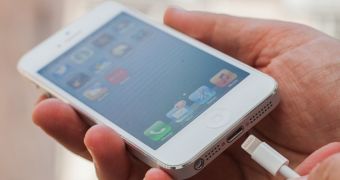The EU’s directive for universal phone chargers has passed with 550 votes in favor, 12 against and 8 abstentions, essentially forcing Apple (and other vendors) to change their proprietary connector to Micro-USB for future devices. The change will go into effect in 2017.
After announcing its intentions to try and convince electronics vendors to agree on a universal charging connector to eliminate e-waste, the European Parliament came to an agreement that the directive should pass, and a law be instated.
The directive passed with 550 votes in favor, 12 against, and 8 abstentions, according to Patently Apple. Apple will have to use a standard charger by 2017, the ruling says.
European parliament negotiator Barbara Weiler said in a statement, “I am especially pleased that we agreed on the introduction of a common charger. It will put an end to charger clutter and 51,000 tons of electronic waste annually.”
The main reason is to eliminate the need to have multiple chargers in a household just because of the different connecting standards imposed by the electronic vendors. For example, a household with an iPhone, and Android phone, and a Nokia phone will have at least three separate chargers and cables laying around.
Starting with 2017, that same household can charge all three devices with a single charger and Micro-USB cable (one at a time, obviously).
However, there are a few issues to be addressed before the directive morphs into a full fledged law. The European Commission will need to determine which specific devices will fall under the new rules. Another issue is Apple’s reliance on its own designs. The company’s innovation pace may be thwarted by the decision.
However, the decision could have more beneficial outcomes than one. Instead of playing ball, Apple could pour resources into developing a state-of-the-art wireless charging and data transfer method that will essentially cause cables and chargers to go extinct.
There are already a range of technologies that use induction to charge the battery inside a device, so this would only require refinements on Apple’s end. iCloud already takes away a lot of the need to tether an iPhone to a PC using a conventional cable, and in three years’ time that convenience will undoubtedly extend to most (if not all) of the phone’s functions.
For now, things remain unchanged. The next-generation iPhone 6 will likely sport the same Lightning connector as the iPhones before it, and so will upcoming iPads.

 14 DAY TRIAL //
14 DAY TRIAL //